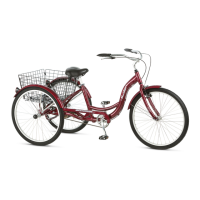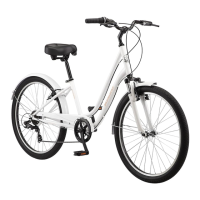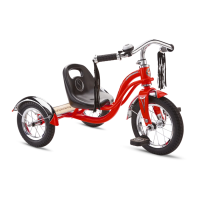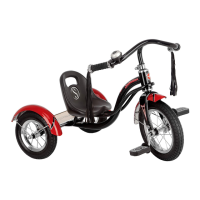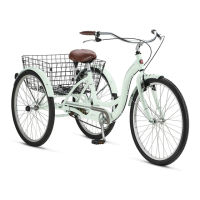©2010
GETTING STARTED
Open the carton from the top and remove the bicycle. Remove the straps and protecve
wrapping from the bicycle. Inspect the bicycle and all accessories and parts for possible
shortages. It is recommended that the threads and all moving parts in the parts package
be lubricated prior to installaon. Do not discard packing materials unl assembly is
complete to ensure that no required parts are accidentally discarded. Assemble your
bicycle following the steps that pertain to your model. (Fig. 3.2)
NOTE: Your bicycle may be equipped with dierent style components than the
ones illustrated.
HANDLEBAR ASSEMBLY
Remove all protecve packaging from the handlebar assembly if not already done.
Turn the fork of the bicycle to face forward. Note that “forward” means that the wheel
mounng slots are in the furthest forward posion. So the wheel axle will be in front of
the fork when assembled. (Fig. 3.3)
Check handlebar stem clamp bolts to be sure they are properly ghtened, and
handlebar can not move. The angle of the handlebar can be adjusted. To adjust; loosen
all of the handlebar stem clamping bolts, and rotate the handlebar to the desired angle.
Be sure that the handlebar stays centered in the stem. Reghten the bolts a LITTLE at
a me being sure that the gap between the stem cap and stem stays even. Repeat
ghtening each bolt a lile bit unl handlebar is secure. (Fig. 3.4)
Models with gear and/or brake cables:
Locate the handlebar assembly. If your model bicycle comes equipped with gears
and/or handbrakes, you will need to be sure that the brake cables and shi cables are
properly routed. Posion the handlebar assembly as if you were going to install it, and
take a look at the cables. They should run in a smooth arc from the shier or brake
lever to the front brake or cable stop on the frame. If they are twisted or kinked, the
shiing and braking will not work. Rotate the handlebars around unl the cables are
taking the smoothest route. (Fig. 3.5)
ASSEMBLY
3.2

